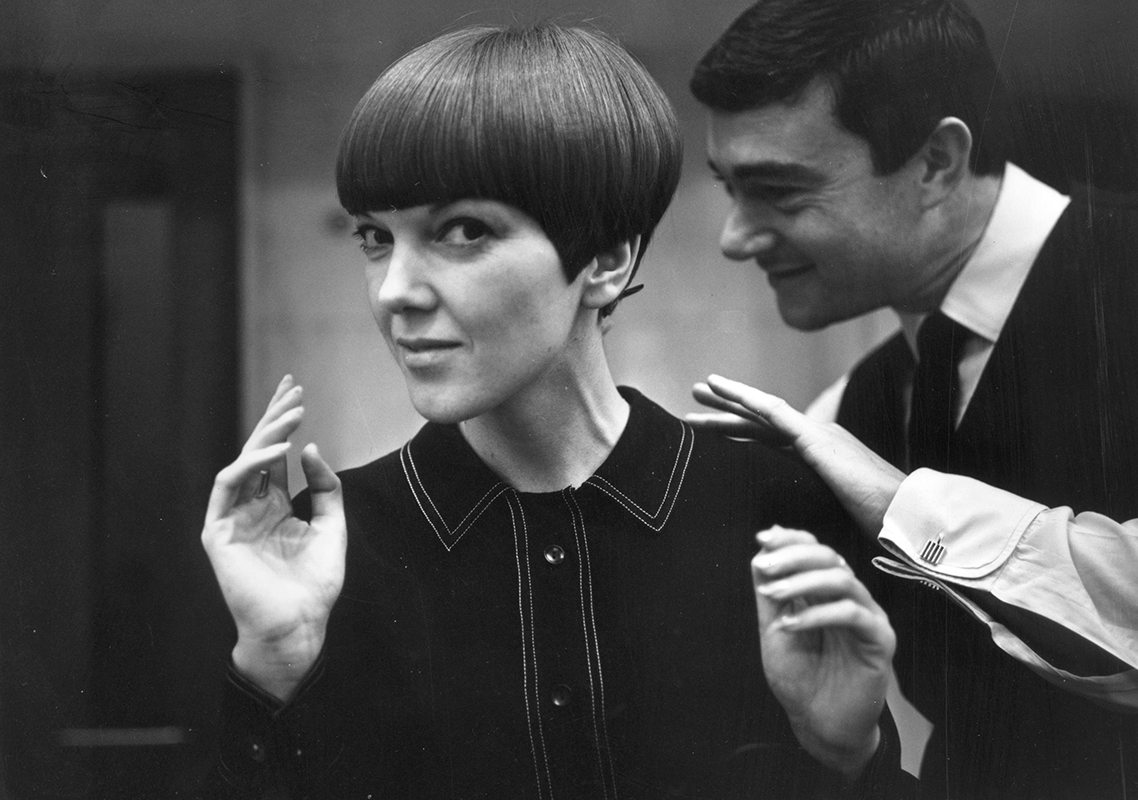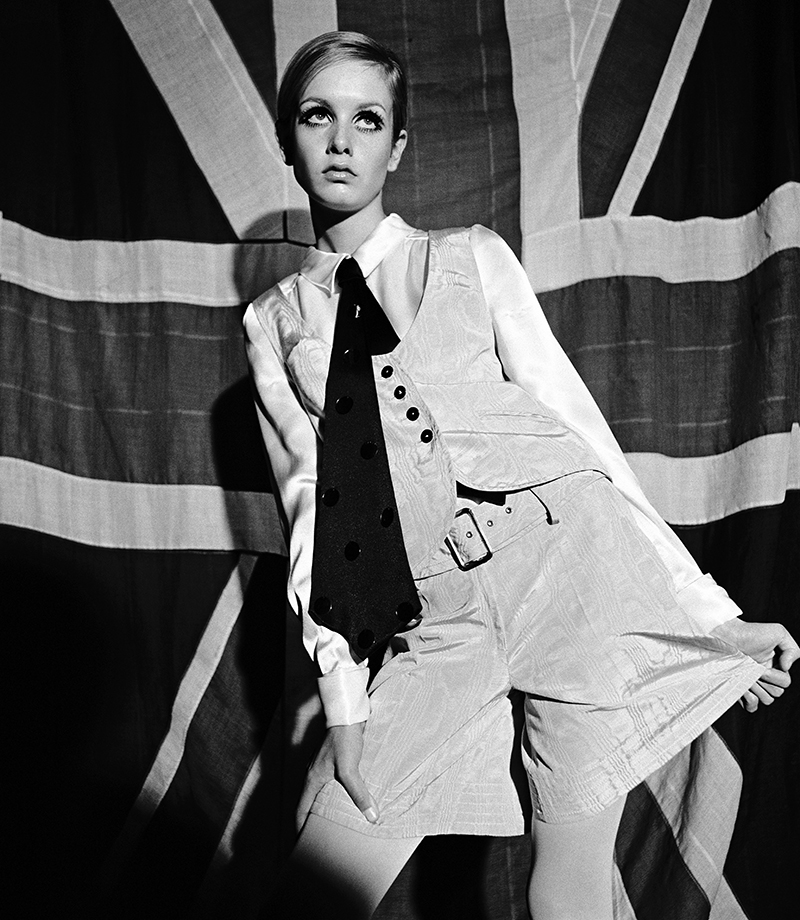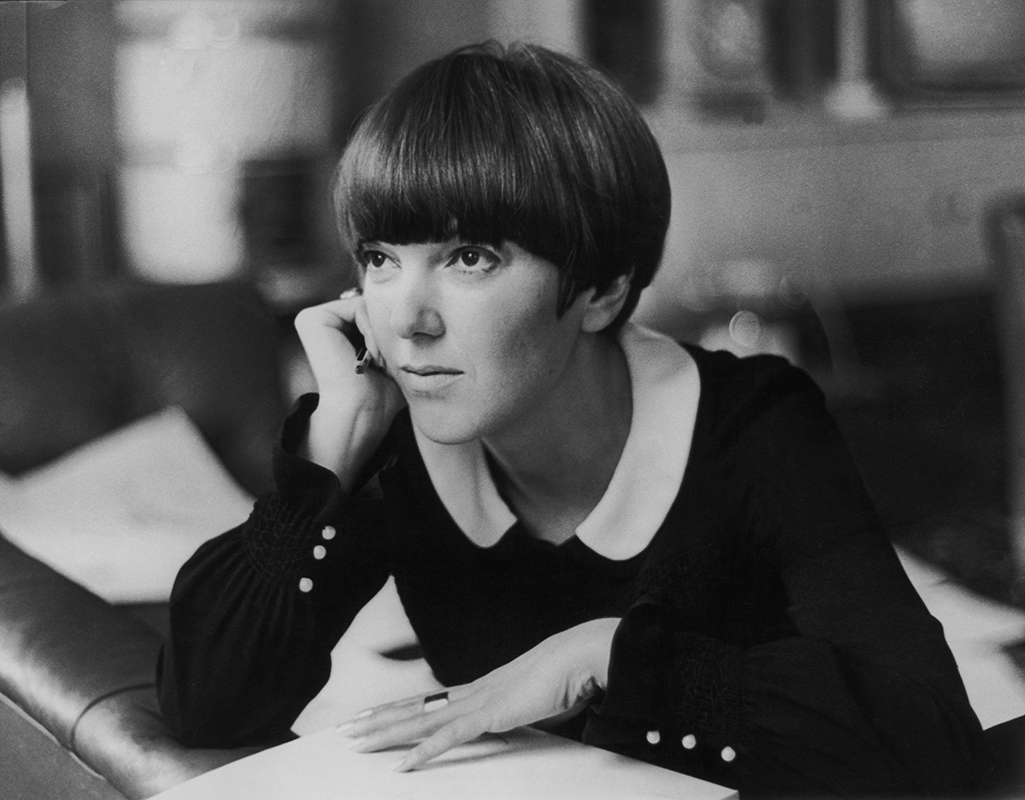This website uses cookies so that we can provide you with the best user experience possible. Cookie information is stored in your browser and performs functions such as recognising you when you return to our website and helping our team to understand which sections of the website you find most interesting and useful.
As the V&A launches its landmark Mary Quant exhibition, we find out how the designer became the face of a generation
By Michelle Johnson | 5 April 2019 | Culture, Style
Jenny Lister, curator of Mary Quant at the V&A, tells Tempus how the British designer changed the face of fashion

Dame Mary Quant is synonymous with the Swinging 60s. Credited with popularising the miniskirt and inventing hotpants, the British designer was also the first to use PVC fabrics for her ‘wet look’ dresses, Peter Pan collars and Quant Afoot footwear. Her bold use of colour became the aesthetic of a generation – famous names including models Jean Shrimpton and Twiggy become instant fans and championed her distinctive look. A pioneer of British fashion, Quant’s impact will be celebrated with a new Victoria & Albert Museum exhibition opening in April.
The show – Mary Quant, sponsored by King’s Road, at the V&A – is curated by Jenny Lister and Stephanie Wood and runs from 6 April 2019 to 16 February 2020. Bringing together more than 200 garments and accessories created by the designer – including previously unseen pieces from her personal archive – the exhibition at the V&A showcases how one designer transformed the landscape of design for ever.
"Many of the themes of the Mary Quant exhibition are incredibly relevant today such as self-expression, female ingenuity and empowerment and women’s liberation," Lister tells Tempus ahead of the opening. "Quant popularised many of the things we take for granted today such as miniskirts, tights and waterproof mascara, and she was also among the first to promote trousers and suits for fashionable womenswear. This appropriation of menswear remains one of her greatest contributions to fashion. Her move into mass-production in the early 1960s made her designs much more affordable for working women and her hugely successful cosmetics line, introduced in 1966, established her as the godmother of accessible, designer fashion for all.
"British fashion was already respected for its high-quality wool textiles and especially for tailoring for men and women. But Quant used the already strong brand of Britishness is a clever, almost subversive way, producing youthful and unconventional clothes. Inspired by London’s artistic and music scene, she overturned the dominance of Parisian couture and made British streetstyle the global influence it remains today. Her iconic and recognisable brand helped shape the global identity of British fashion today and made London a centre for street style, creativity and innovation." >>
Related: Made to measure: how family-run footwear boutique John Lobb has stood the test of time

Quant founded her first boutique on London’s King’s Road in 1955 – the infamous Bazaar –with her then future husband, aristocrat Alexander Plunket Greene. From the start, the self-made fashion giant fought against the dominance of traditional Parisian couture houses such as Givenchy and Balenciaga, whose tailored, multi-generational elegance was no longer such an inspiration to a youthful generation eager to rebel against their parents’ staid style.
"Quant was inspired by Balenciaga’s new shapes like the sack dress, which disrupted the traditional, feminine and waisted silhouette. But her approach was completely different, the shape of her early designs came from school-girl inspired pinafore dresses, with clever pleats, and were sometimes also inspired by 1920s flapper styles. Of course, she took tailored trousers too and turned them into fashionable garments, which was really going against traditional boundaries," says Lister. "For her, it was all about movement, the female body and what it needs to do in real life, going to work and going out again dancing. She talked about how male designers dreamed up abstract, architectural shapes which the female body then had to be inserted into – but she worked the other way around, so as jersey fabrics and synthetics came on the market, these really suited her typical simple, sporty mini dress designs.
"To begin with, her materials were often business-like stripes and checks, or tweeds which she had dyed in bright, unconventional colours. Some fabrics like PVC were originally only available in dull colours or black, and very utilitarian, but she had persuaded manufacturers to produce them in bright rainbow shades. Her approach was very much about self-expression, being sexy and looking good, but she really insisted her clothes were comfortable and practical, like a pair of Levis (her ultimate reference point for good design). Most importantly, she made fashion accessible, enjoyable and fun for as many people as possible, not the diminishing elite who could afford to buy couture. It was a huge turning point in fashion," she says.
Quant’s colourful and irreverent designs became an instant favourite of the artistic Chelsea Set and sleekly styled Mods, and by 1957 she had opened a second Bazaar store that hosted evening ‘scenes’, with music and refreshments for clientele seeking more experiential shopping trips. >>
Related: How hot design duo Ralph & Russo are leading the rise and rise of British couture

"I think it’s so interesting to see how fashion retail is adapting to the many challenges of today, and going back to these more real, tangible experiences. She worked so hard on her shops, with surreal installations in her window displays, really taking on and challenging the retail giants, which were department stores like Harrods, in those days," she says. "It does go back to her ability to see that life was changing for her generation, and that people rejected the rules and boundaries of the ‘Establishment’, and that social class and gender roles were shifting and becoming less relevant, so accordingly fashion could both reflect and comment on these changes, and in retrospect we can see that her designs and how they were disseminated in the media, helped attitudes to change. As she said, ‘Fashion is a tool to compete in life outside the home’. Ultimately, it was Mary’s unique personal style was what her customers wanted to emulate, and like today, it was about putting together a look that expresses something individual, not conforming to type – that’s what fashion and style is really about now."
As business savvy as she was stylish, by the late 1960s, Quant had become the most famous face in British fashion, conquering international couture, the UK high street via a mass market diffusion line, as well as the US market.
"Today, we see women designers are equally successful and prominent in the fashion industry, at all levels. I think that Mary’s incredible, global profile showed that brands with a relatable, media savvy person at the heart, gain many followers. She was so good at marketing too, with really fierce, consistent branding on all her products, and of course the daisy logo, which communicates so much in a really efficient, visual way. 60 years before Instagram shopping, she showed how to wear the look, and market this at every opportunity in print and film, so potential customers could see the impact of her style and connect with her bold, risk taking attitude to life."







